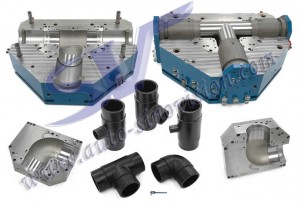Many injection molding manufacturers will encounter similar problems. There is no problem with the product quality, but the product gloss is really unqualified, which eventually leads to scrap products after the processing of injection molded parts. In addition to the problems of the plastic itself, there are also problems in such aspects as injection mold, production, design, etc.

1. In terms of injection molding production process
There are several options to try, which can be changed by adjusting the mold temperature, feeding/holding pressure, filling speed and material temperature. In most cases, these adjustments will not have a great impact, and will reduce the process window of the entire production, thus increasing the possibility of other problems. Therefore, it is best to find the most robust process for the part and maintain the surface finish of the cavity mold.
2. In terms of injection mold
When dealing with the gloss problem, do not change the surface finish of the die steel at first. On the contrary, first adjust the process parameters to change the gloss of the product. Lower temperature dies, cooler melts, lower feeding/holding pressure and lower filling speed may make your plastic parts shiny. The reason for this is that the mold temperature is low, the applied pressure is small, and the plastic is not copied to the micro details of the mold steel surface finish.

On the other hand, if the surface gloss of the product is too high, it can be realized by reducing the surface polish of the die steel or sandblasting in the die cavity. Both methods will create small pits on the steel, thus increasing the surface area, which will allow the injection molding products to absorb more light, thus making your parts appear darker.
3. In injection molding product design
Another gloss problem is related to the design of the product, especially where the wall thickness of the product changes. When the wall thickness changes, it is difficult to maintain the consistent glossiness of parts. Due to the difference of flow patterns, the thinner wall section will not be under too much plastic material pressure, and the result is that the glossiness of this area will be higher.
Inadequate exhaust will also produce inconsistent surface gloss. According to different materials and processes, insufficient exhaust will lead to dark spots and bright spots.
The above three points are important factors affecting the glossiness of injection molding products. As long as injection molding manufacturers take these issues into consideration before producing products, the glossiness of injection molding products can be avoided.
Post time: Sep-27-2022

